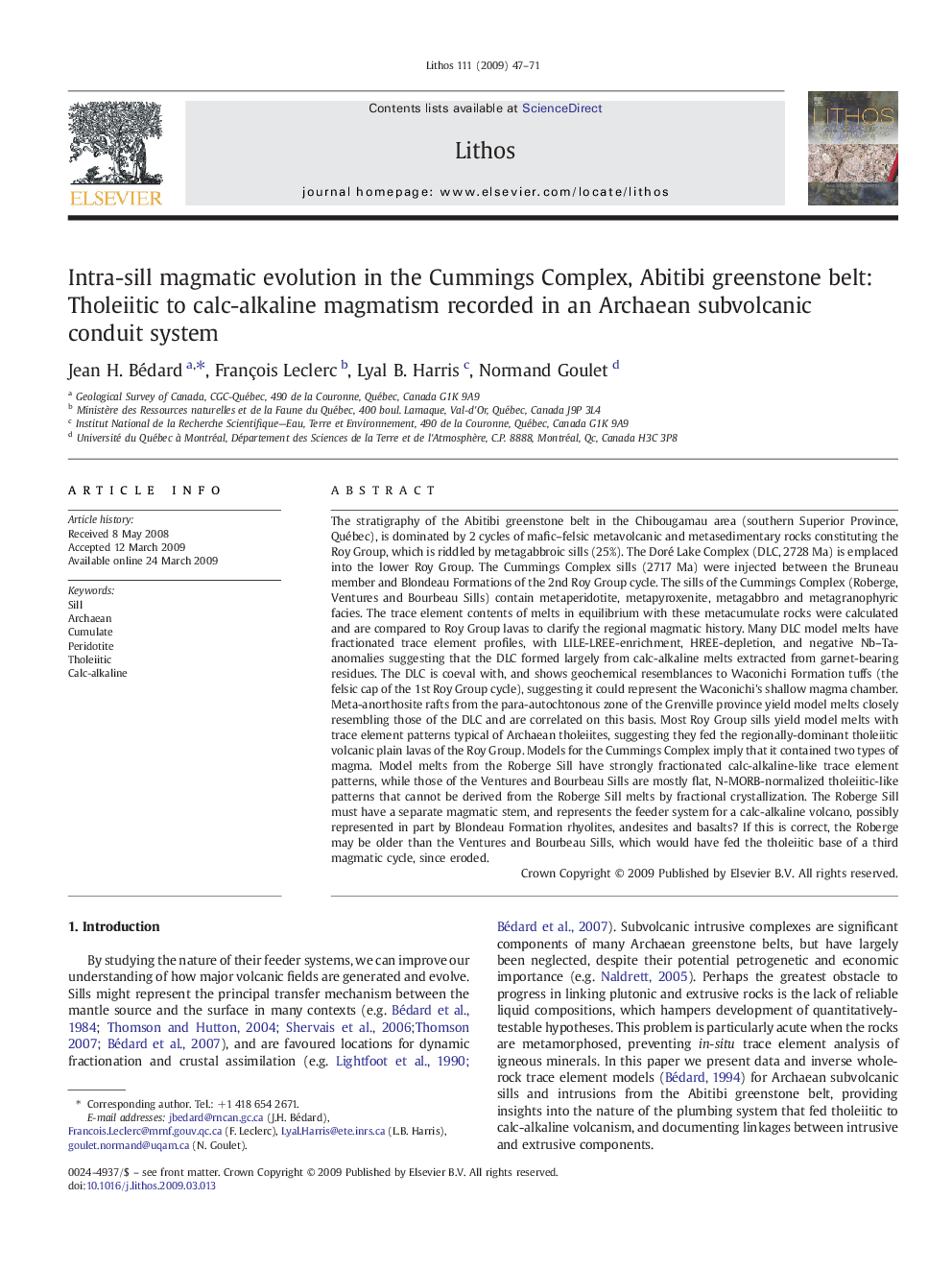| کد مقاله | کد نشریه | سال انتشار | مقاله انگلیسی | نسخه تمام متن |
|---|---|---|---|---|
| 4717147 | 1638743 | 2009 | 25 صفحه PDF | دانلود رایگان |

The stratigraphy of the Abitibi greenstone belt in the Chibougamau area (southern Superior Province, Québec), is dominated by 2 cycles of mafic–felsic metavolcanic and metasedimentary rocks constituting the Roy Group, which is riddled by metagabbroic sills (25%). The Doré Lake Complex (DLC, 2728 Ma) is emplaced into the lower Roy Group. The Cummings Complex sills (2717 Ma) were injected between the Bruneau member and Blondeau Formations of the 2nd Roy Group cycle. The sills of the Cummings Complex (Roberge, Ventures and Bourbeau Sills) contain metaperidotite, metapyroxenite, metagabbro and metagranophyric facies. The trace element contents of melts in equilibrium with these metacumulate rocks were calculated and are compared to Roy Group lavas to clarify the regional magmatic history. Many DLC model melts have fractionated trace element profiles, with LILE-LREE-enrichment, HREE-depletion, and negative Nb–Ta-anomalies suggesting that the DLC formed largely from calc-alkaline melts extracted from garnet-bearing residues. The DLC is coeval with, and shows geochemical resemblances to Waconichi Formation tuffs (the felsic cap of the 1st Roy Group cycle), suggesting it could represent the Waconichi's shallow magma chamber. Meta-anorthosite rafts from the para-autochtonous zone of the Grenville province yield model melts closely resembling those of the DLC and are correlated on this basis. Most Roy Group sills yield model melts with trace element patterns typical of Archaean tholeiites, suggesting they fed the regionally-dominant tholeiitic volcanic plain lavas of the Roy Group. Models for the Cummings Complex imply that it contained two types of magma. Model melts from the Roberge Sill have strongly fractionated calc-alkaline-like trace element patterns, while those of the Ventures and Bourbeau Sills are mostly flat, N-MORB-normalized tholeiitic-like patterns that cannot be derived from the Roberge Sill melts by fractional crystallization. The Roberge Sill must have a separate magmatic stem, and represents the feeder system for a calc-alkaline volcano, possibly represented in part by Blondeau Formation rhyolites, andesites and basalts? If this is correct, the Roberge may be older than the Ventures and Bourbeau Sills, which would have fed the tholeiitic base of a third magmatic cycle, since eroded.
Journal: Lithos - Volume 111, Issues 1–2, July 2009, Pages 47–71